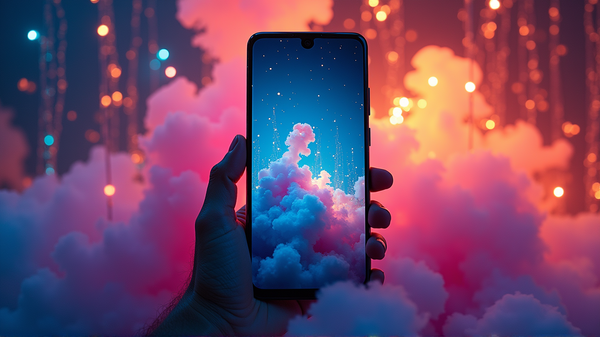Users Flocking from Android to iPhone Reaches Five-Year High
According to a recent CIRP study, the number of users switching from Android to iPhone has reached a five-year high. In June 2024, 17% of new iPhone buyers came from Android devices, nearly doubling from 10% in June 2023.
While this is good news for Apple, CIRP suggests that the rise in switchers might be one reason behind the relatively weak sales of the iPhone 15.
Android users may be looking for a new device with a different operating system at a competitive price, but they do not necessarily need the latest and most expensive Apple models. This can lead to a decline in sales of new iPhone models.
Additionally, the increase in Android switchers may indicate a decrease in updates among iPhone users, which has traditionally been a strong point for the company.
The second quarter of 2024 showed the highest percentage of Android switchers since 2017 when this figure reached 21%.
Why Users Are Switching from Android to iPhone in Record Numbers
A significant shift is happening in the smartphone market, as more Android users are switching to iPhones than ever before. Recent data from CIRP reveals that in June 2024, a staggering 17% of new iPhone users previously owned Android devices. This marks a nearly twofold increase compared to the same period in 2023, when only 10% of new iPhone users came from Android.
Several factors contribute to this trend. Firstly, Apple has continuously enhanced its ecosystem, making the transition from Android to iOS smoother and more attractive. Features like iCloud, seamless integration with other Apple devices, and superior customer service play crucial roles in enticing Android users to switch.
Moreover, Apple's strong brand reputation and the perception of higher security and privacy standards have also been influential. Many Android users are drawn to the iPhone's robust security features and the promise of regular software updates that keep their devices secure and efficient.
The Impact of Increased Android to iPhone Switching on Apple's Sales
Despite the influx of Android switchers, CIRP's findings indicate that this trend may have contributed to the relatively lackluster sales of the iPhone 15. While more Android users are adopting iPhones, they are not necessarily purchasing the latest models. Instead, they might opt for older or less expensive iPhones, such as the iPhone SE or previous generation models, which offer a more cost-effective entry into the Apple ecosystem.
This behavior can impact Apple's bottom line, as the company relies heavily on the sales of its latest models to drive revenue growth. The preference for older models among switchers may explain the subdued performance of the iPhone 15 in the market.
What This Means for the Future of the Smartphone Market
The rising number of Android to iPhone switchers could signal several key trends in the smartphone market. Firstly, it highlights a potential shift in consumer preferences towards the Apple ecosystem, driven by factors like security, privacy, and seamless integration with other Apple products.
However, this trend also suggests a potential challenge for Apple: maintaining high sales volumes for its latest iPhone models. If more users continue to switch from Android but prefer older iPhone models, Apple might need to rethink its strategy for encouraging users to upgrade to the latest releases.
The Role of Pricing and Competition in the Smartphone Market
Pricing plays a crucial role in the decision-making process for many smartphone users. Android devices often offer a wider range of prices, including many budget-friendly options. This diversity makes Android appealing to a broad audience.
However, as Android users look to switch to iPhones, they may not necessarily seek the latest and most expensive models. Instead, they might be attracted to older models that provide a balance of quality and affordability. This trend underscores the importance of competitive pricing in the smartphone market and suggests that Apple could benefit from offering more mid-range options to capture this segment of the market.
The Decline in iPhone Updates and Its Implications
Another noteworthy point from CIRP's study is the potential decline in updates among iPhone users. Historically, Apple has enjoyed a loyal customer base that frequently updates to the latest iPhone models. However, the increase in Android switchers might indicate a shift in this pattern.
If more users are switching to iPhones but opting for older models, it could lead to a decrease in the frequency of updates among existing iPhone users. This trend might affect Apple's long-term strategy, as the company has traditionally relied on regular updates to drive revenue growth and maintain customer engagement.
The Historical Context: Comparing Current Trends to 2017
To put the current trend into perspective, it's helpful to look back at historical data. The second quarter of 2024 saw the highest percentage of Android to iPhone switchers since 2017, when the figure reached 21%. This comparison highlights the significant resurgence in the appeal of iPhones to Android users.
In 2017, several factors, including the release of the iPhone X with its groundbreaking design and features, contributed to the high number of switchers. The recent increase suggests that Apple has once again managed to capture the interest of Android users, possibly due to ongoing innovations and improvements in its product lineup.
The Broader Implications for Smartphone Manufacturers
The trend of Android users switching to iPhones has broader implications for the entire smartphone industry. It underscores the importance of innovation, user experience, and ecosystem integration in attracting and retaining customers.
For Android manufacturers, this trend serves as a wake-up call to enhance their offerings and compete more effectively with Apple's ecosystem. Companies like Samsung, Google, and other Android device makers must continuously innovate and improve their products to retain their customer base and attract new users.
Strategies for Apple to Capitalize on the Switching Trend
To capitalize on the increasing number of Android switchers, Apple can adopt several strategies. Firstly, the company can continue to enhance the seamless integration of its devices and services, making it even easier for Android users to switch and enjoy the full benefits of the Apple ecosystem.
Additionally, Apple could focus on offering more mid-range iPhone models that provide a compelling alternative to the latest high-end devices. This approach would cater to cost-conscious Android users looking for a high-quality smartphone without the premium price tag.
Moreover, Apple can leverage its strong brand reputation and marketing prowess to highlight the unique advantages of its ecosystem, including security, privacy, and superior customer support. By emphasizing these strengths, Apple can attract more Android users and encourage them to become long-term customers.
The Role of Software and Ecosystem in Attracting Switchers
One of the key factors driving the switch from Android to iPhone is the software experience and ecosystem integration. Apple's iOS is known for its intuitive user interface, smooth performance, and regular updates that keep devices secure and up-to-date.
The Apple ecosystem, which includes products like the Apple Watch, iPad, Mac, and services like iCloud, Apple Music, and Apple TV+, offers a seamless and integrated experience that is hard to match. This ecosystem creates a compelling value proposition for Android users looking for a more cohesive and streamlined experience.
Addressing the Needs of Android Users Switching to iPhones
To better address the needs of Android users switching to iPhones, Apple can provide resources and support to make the transition as smooth as possible. This could include comprehensive guides, tutorials, and customer support to help new users get accustomed to iOS and make the most of their new devices.
Apple can also continue to improve its migration tools, making it easier for Android users to transfer their data, apps, and settings to their new iPhones. By reducing the friction associated with switching, Apple can enhance the overall experience and increase satisfaction among new users.
The Future of Smartphone Market Dynamics
Looking ahead, the trend of Android users switching to iPhones is likely to continue, driven by the factors discussed earlier. However, the competitive landscape of the smartphone market will also evolve, with manufacturers constantly striving to innovate and differentiate their products.
For Apple, the challenge will be to maintain its appeal to both new and existing customers while continuing to drive sales of its latest models. This will require a balanced approach that includes innovation, competitive pricing, and a strong focus on user experience and ecosystem integration.
Conclusion
The recent surge in Android users switching to iPhones marks a significant trend in the smartphone market. With 17% of new iPhone buyers coming from Android devices in June 2024, Apple has successfully attracted a substantial number of switchers. However, this trend also presents challenges, particularly in maintaining high sales volumes for its latest models.
By understanding the needs and preferences of Android switchers, Apple can develop strategies to capitalize on this trend and continue to grow its market share. This includes offering more mid-range options, enhancing the seamless integration of its ecosystem, and providing robust support for new users.
As the smartphone market continues to evolve, manufacturers will need to innovate and adapt to stay competitive. For Apple, the focus will be on maintaining its strong brand reputation, delivering superior user experiences, and leveraging its ecosystem to attract and retain customers.
4o




